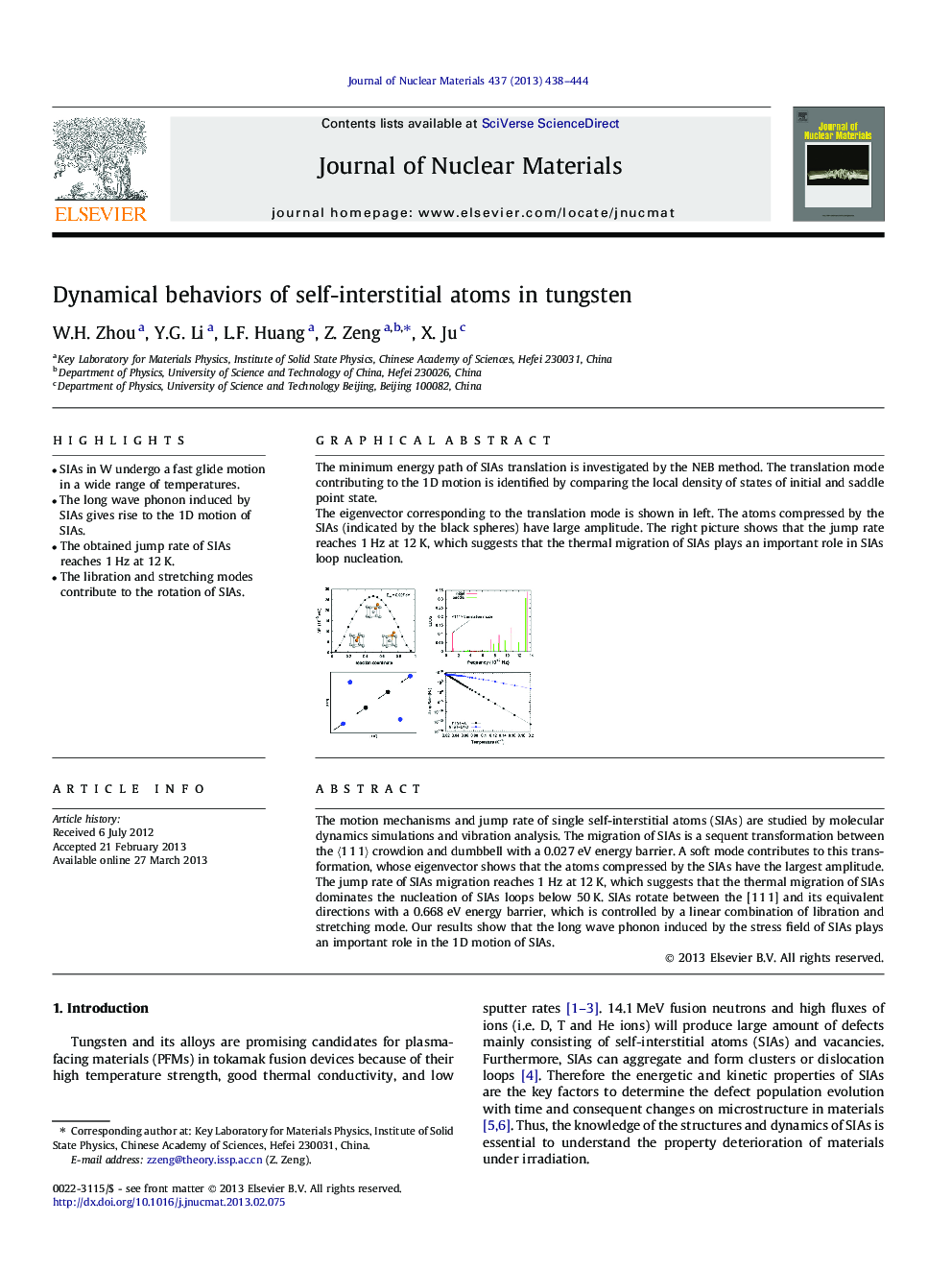| Article ID | Journal | Published Year | Pages | File Type |
|---|---|---|---|---|
| 1565820 | Journal of Nuclear Materials | 2013 | 7 Pages |
•SIAs in W undergo a fast glide motion in a wide range of temperatures.•The long wave phonon induced by SIAs gives rise to the 1D motion of SIAs.•The obtained jump rate of SIAs reaches 1 Hz at 12 K.•The libration and stretching modes contribute to the rotation of SIAs.
The motion mechanisms and jump rate of single self-interstitial atoms (SIAs) are studied by molecular dynamics simulations and vibration analysis. The migration of SIAs is a sequent transformation between the 〈1 1 1〉 crowdion and dumbbell with a 0.027 eV energy barrier. A soft mode contributes to this transformation, whose eigenvector shows that the atoms compressed by the SIAs have the largest amplitude. The jump rate of SIAs migration reaches 1 Hz at 12 K, which suggests that the thermal migration of SIAs dominates the nucleation of SIAs loops below 50 K. SIAs rotate between the [1 1 1] and its equivalent directions with a 0.668 eV energy barrier, which is controlled by a linear combination of libration and stretching mode. Our results show that the long wave phonon induced by the stress field of SIAs plays an important role in the 1D motion of SIAs.
Graphical abstractThe minimum energy path of SIAs translation is investigated by the NEB method. The translation mode contributing to the 1D motion is identified by comparing the local density of states of initial and saddle point state.The eigenvector corresponding to the translation mode is shown in left. The atoms compressed by the SIAs (indicated by the black spheres) have large amplitude. The right picture shows that the jump rate reaches 1 Hz at 12 K, which suggests that the thermal migration of SIAs plays an important role in SIAs loop nucleation.Figure optionsDownload full-size imageDownload as PowerPoint slide
